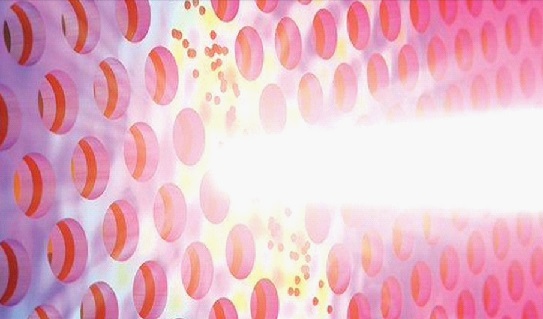
Three researchers of the Universitat de València are part of the group in charge of designing and evaluating a semiconductor laser device, with which it would be possible to save between 100 and 1,000 times the energy consumed by current laser devices. The work, published in ‘Optica’ journal of the ‘Optical Society of America’ (OSA), has been selected as one of the 30 most relevant works of 2015 in the field of optics.
According to the researchers, lasers need an external pump –optic (light) or electric (current) to start emitting laser light. “If this threshold is very high, the system needs a lot of power in order to work. However, if this threshold is low, less power is required and we can say that the system is more efficient”, state the researchers of the research group.
Precisely, one of the paradigms of research in this field is to achieve lasers with a void threshold, with which no extra consumption will be needed, as any current or light input, however minimal, would be enough to achieve a laser light.
The laser device made by the Institute of Microelectronics of Madrid (CSIC) and tested at the Unit for Optoelectronic Devices and Materials of the Institute of Material Science (ICMUV) of the Universitat de València, is based in the optics emission of embedded semiconductor nanostructures in a photonic crystal cavity that operate almost without a threshold and at room temperature. It is a device that, for its characteristics, can be used in photonic circuits, comparable to electronic circuits but which, instead of working with current and voltage, work with light.
Unlike lasers without threshold, which require very low temperatures to work (-269º C), this device works at room temperature, “which significantly cuts prices on technology and allows thinking in its insertion in the productive fabric”, according to the researchers.
The third of its advantages comes from the wavelength in which it works, 1,286 nanometres (1 nanometre = 1nm), corresponding to the second spectral window of telecommunications. There are two specific spectral areas mainly used in communications technologies which use optic fibre: the second window (1,300nm), in which the light pulses do not present temporal dispersion, and the third window (1,550nm), in which the light suffers the minimum level of losses when spreading through the fibre.
For this reason, state the experts, this type of device will be easily integrated in new optic fibre equipment, which will allow the development of telecommunication technologies, data storage technologies or high sensitivity biosensors. With this, consumption will be reduced and more efficient and sustainable alternative technologies could be offered.
This work was developed in the Microelectronics Institute of Madrid (CSIC), in the Unit for Optoelectronic Devices (UMDO-Universitat de València) and in the Laboratory for Solid State Physics (ETH Zurich).
The article of I. Prieto ‘et al’ (Optica 2, page 66, 2015) has been selected by the Optical Society of America as one of the 30 most relevant works of 2015 in the field of optics.
Links (article and mention to OSA):
https://www.osapublishing.org/optica/abstract.cfm?uri=optica-2-1-66&origin=search
http://www.osa-opn.org/home/articles/volume_26/december_2015/features/optics_in_2015/




















